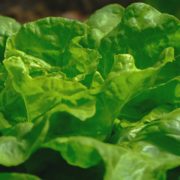The Center for Disease Control (CDC), public health and regulatory officials in several states, and the U.S. Food and Drug Administration (FDA) are investigating a multi-state outbreak of E. coli O157:H7 infections linked to romaine lettuce harvested from the Salinas, California, growing region.
The CDC advises that consumers not eat and retailers not sell any romaine lettuce grown in this growing region. This includes all use-by dates and brands of romaine lettuce from this region.
This advice includes all types of romaine lettuce grown in Salinas, California, such as whole heads of romaine, organic romaine, hearts of romaine, romaine in salad wraps, and packages of precut lettuce and salad mixes which contain romaine, including baby romaine, spring mix, and Caesar salad.
Most romaine lettuce products are labeled with a harvest location showing where they were grown. Hydroponically- and greenhouse-grown romaine, which is voluntarily labeled as “indoor grown,” from any region does not appear to be related to the current outbreak.
If you have romaine lettuce or packaged foods containing romaine at home:
• Look for a label showing where the romaine lettuce was grown. It may be printed on the package or on a sticker.
• If the label says “grown in Salinas” (whether alone or with the name of another location), don’t eat it. Throw it away.
• If it isn’t labeled with a growing region, don’t eat it. Throw it away.
• If you don’t know if the lettuce is romaine or whether a salad mix or wrap contains romaine, don’t eat it. Throw it away.
• Wash and sanitize drawers or shelves in refrigerators where romaine lettuce was stored.
If you are buying romaine lettuce at a store:
• Look for a label showing where the romaine lettuce was grown. It may be printed on the package or on a sticker.
• If the label says “grown in Salinas” (whether alone or with the name of another location), don’t buy it.
• If it isn’t labeled with a growing region, don’t buy it.
• Restaurants and retailers should check the label on bags or boxes of romaine lettuce, or ask their suppliers about the source of their romaine lettuce.
Look for a label showing where the romaine lettuce was grown. It may be printed on the package or on a sticker.
– If the label says “grown in Salinas” (whether alone or with the name of another location), don’t sell or serve it.
– If it isn’t labeled with a growing region, don’t sell or serve it.
– Suppliers, distributors, and others in the supply chain should not ship or sell romaine harvested in Salinas, California.
Take action if you have symptoms of an E. coli infection:
• Talk to your healthcare provider.
• Write down what you ate in the week before you started to get sick.
• Report your illness to your local health department.
• Assist public health investigators by answering questions about your illness.
• Wash your hands thoroughly after changing diapers, using the toilet, and before and after preparing food to lower the chance of infecting others.
A total of 67 people infected with the outbreak strain of E. coli O157:H7 have been reported from 19 states. Six people have developed hemolytic uremic syndrome, a type of kidney failure. No deaths have been reported. (With reports from HHS.gov)







